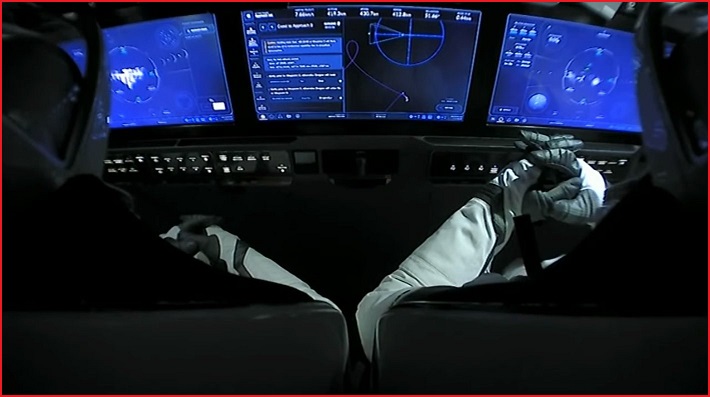SpaceX has become the first private company to launch NASA astronauts into space with a successful mission to the International Space Station (ISS) early on Sunday morning.
The Falcon 9 rocket sent NASA astronauts Doug Hurley and Bob Behnken into orbit aboard SpaceX’s Crew Dragon capsule which successfully docked with the ISS 19 hours after launch.
It was the first time a crewed space launch took off from US soil in nearly 10 years.
Hurley and Behnken will spend the next couple of months working aboard the space station before they take their SpaceX craft back to Earth.
NASA administrator, Jim Bridenstine, said the launch was the beginning of “a new era in human spaceflight”.
“The launch of this commercial space system designed for humans is a phenomenal demonstration of American excellence and is an important step on our path to expand human exploration to the Moon and Mars,” Bridenstine said.
NASA has expanded its space program in recent years and is planning to once again land humans on the Moon by around 2024 – a feat that hasn’t been replicated since 1972.
The arrival of commercial entities like SpaceX into space travel has helped ease the taxpayer-burden of state-funded space exploration.
SpaceX’s Falcon 9 rocket can launch materials into space for less than $4,500 per kilogram. Back when NASA’s space shuttle was active, the cost of resupplying the ISS was around $80,000 per kilogram.
Founder and CEO of SpaceX, Elon Musk, was excited by the successful launch, calling it “a dream come true” to send a crew of astronauts into space.
“It is the culmination of an incredible amount of work by the SpaceX team, by NASA and by a number of other partners in the process of making this happen,” Musk said.
“You can look at this as the results of a hundred thousand people roughly when you add up all the suppliers and everyone working incredibly hard to make this day happen.”
Liftoff! pic.twitter.com/DRBfdUM7JA
— SpaceX (@SpaceX) May 30, 2020
On their journey to the ISS, Hurley and Behnken showed off some of the features of SpaceX’s Crew Dragon capsule which Hurley and Behnken dubbed ‘Endeavour’.
A stark differentiation from previous missions is the Crew Dragon Endeavour’s control panel which mainly consists of touchscreen displays.
“We do have some buttons, but the primary interface is these displays,” said Behnken.
“So a nice, new, modern cockpit we’ve got compared to our namesake, the Space Shuttle Endeavour.”
You can try out the Crew Dragon’s interface with a docking procedure simulation on the SpaceX website.
SpaceX uses products like Jira, Bitbucket, and Confluence from Australian technology success story, Atlassian, in its development cycles.
Co-founder and co-CEO of Atlassian, Mike Cannon-Brookes, told The Australian that he was proud the company’s suite of productivity software was used by SpaceX teams to help make the historic launch take place.
“All Atlassians can feel very proud that our products helped to send the first private spacecraft carrying humans into orbit," Cannon-Brookes said.
"In these complex times, teams working together are still achieving incredible feats.”
"It’s amazing to play a small part in a huge piece of history.”










